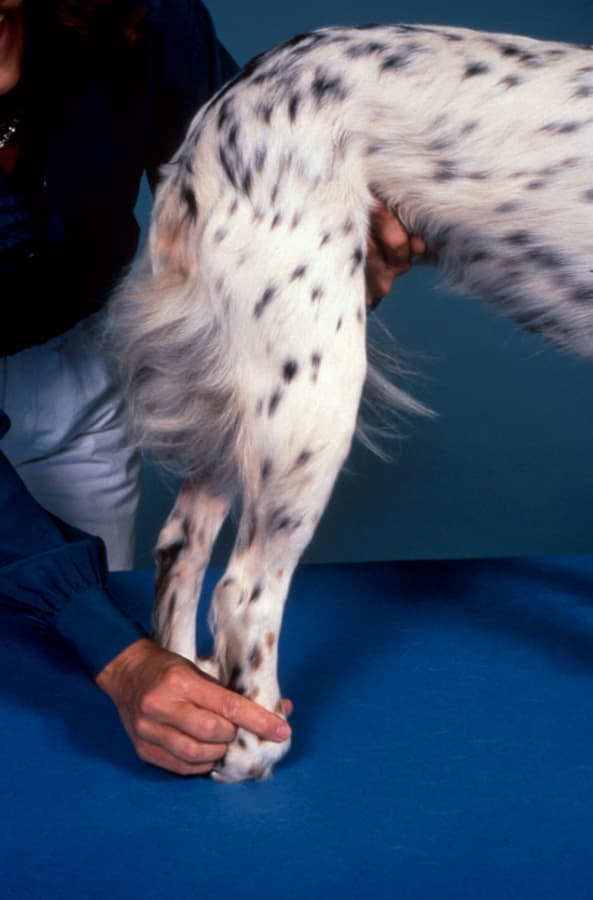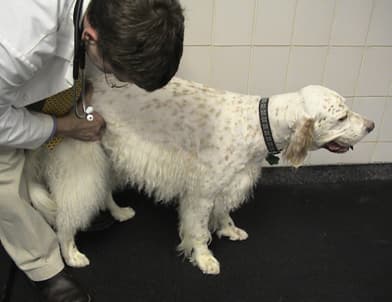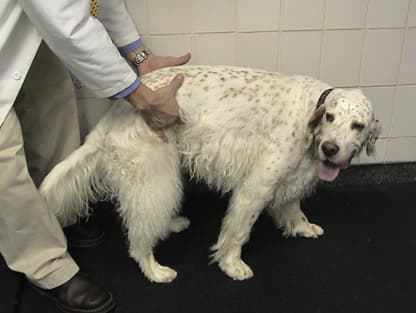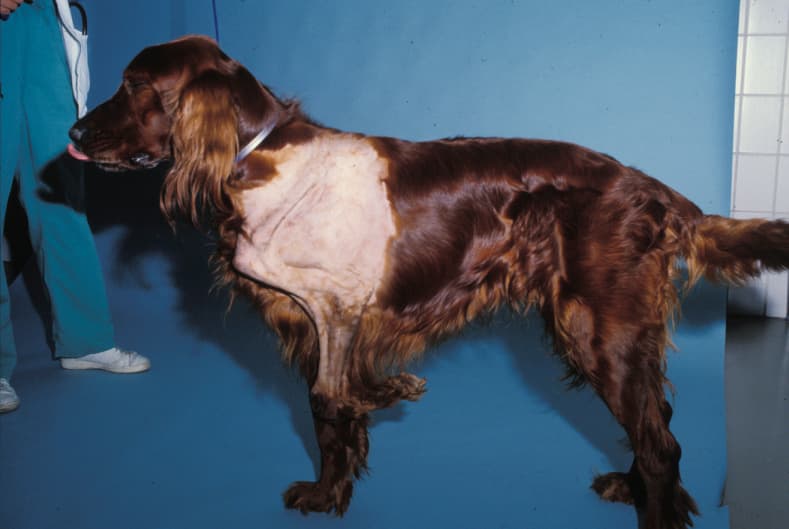
Conscious Proprioception:
Because neurologic disorders may mimic orthopedic diseases or they may occur concurrently, every orthopedic examination should include a neurologic examination. General observations can be made of the animal’s mental status during the orthopedic examination. Evaluate conscious proprioceptive in all four limbs by gently supporting the animal and individually turning each paw until the dorsal surface of the paw contacts the ground. Normal animals return the paw to the correct position almost immediately. Loss of conscious proprioception usually indicates neurologic disease; however, animals with fractured limbs may be reluctant to move the limb and therefore may appear to have conscious proprioceptive deficits.
Neck:
Flex and extend the neck and bend it laterally in both directions.
Apply direct pressure on the lateral processes of the sixth cervical vertebrate.
Animals may exhibit a forelimb lameness associated with cervical nerve root pain (root signature sign) and it is important to rule out cervical disease or nerve root tumors.
Back:
Apply direct pressure on the thoracolumbar spine while supporting the abdomen.
A painful response, exhibited by vocalization, flinching or tightening the abdominal musculature may indicate thoracolumbar spinal disease.


Lumbosacral Pain:
Apply direct pressure on the ventral lumbar musculature to isolate lumbosacral pain. It is important to differentiate lumbosacral and hip pain because many older dogs with radiographic signs of hip dysplasia are lame due to other causes (i.e., lumbosacral instability, cruciate ligament rupture.
To identify lumbosacral pain and differentiate it from pain due to hip dysplasia, deeply palpate the sub lumbar musculature. Be careful, the dog may respond aggressively to the pain.

Peripheral Nerves:
Peripheral nerve damage may result concurrently with fractures of the mid- to distal humerus (radial nerve) or sacrum (sciatic nerve). Apply pressure to digits of the affected limb to elicit a response to superficial and deep pain. No response may indicate peripheral nerve damage.
